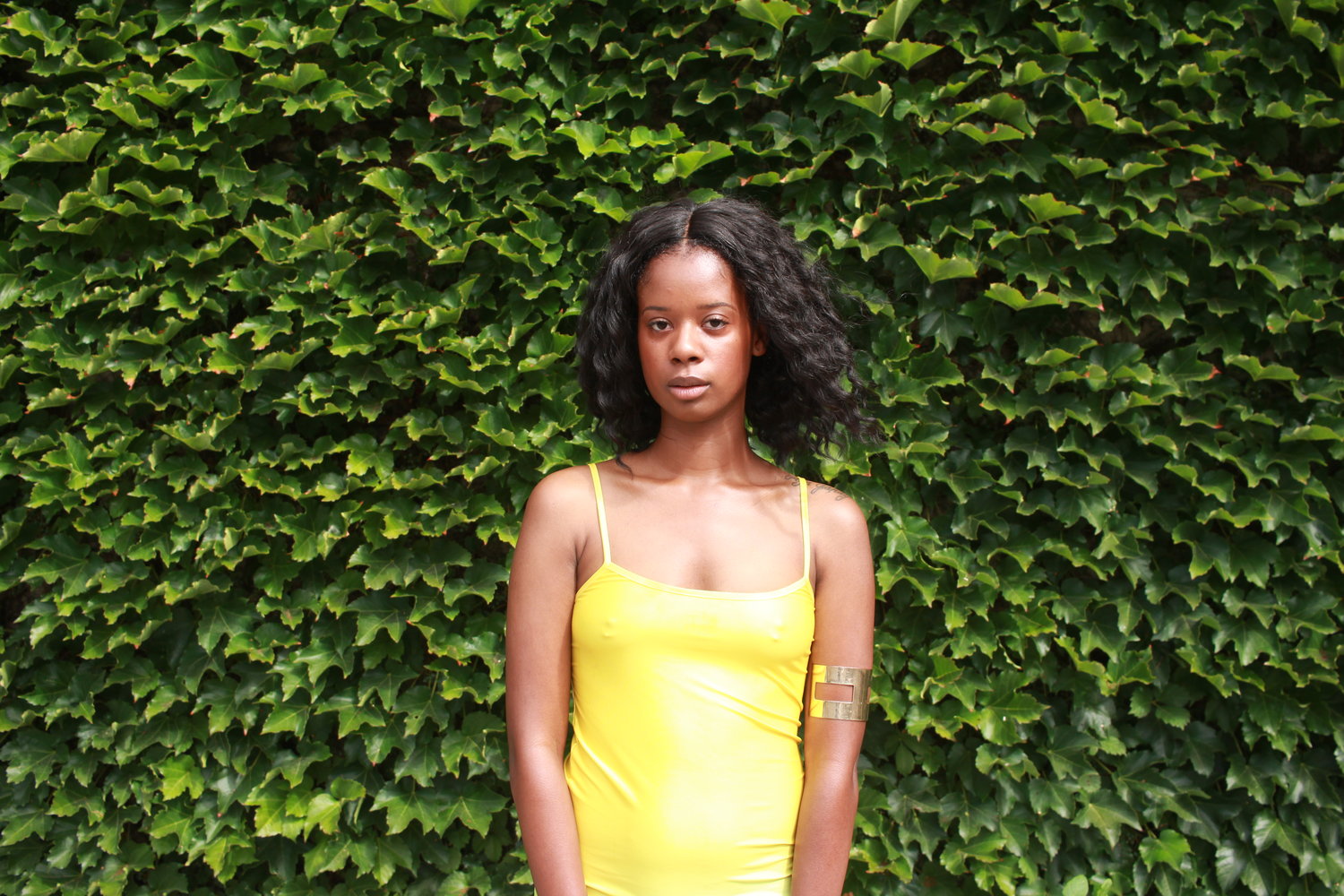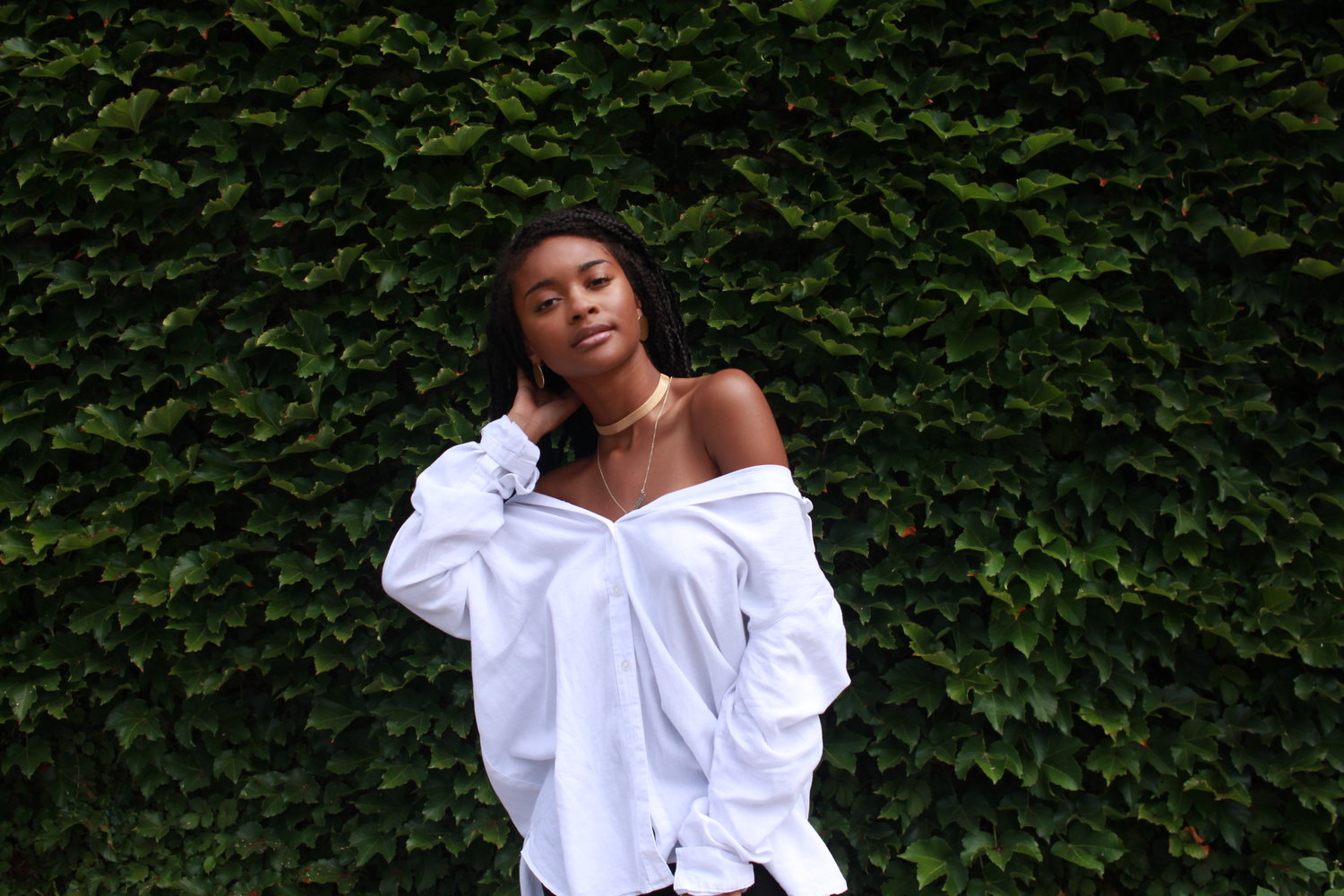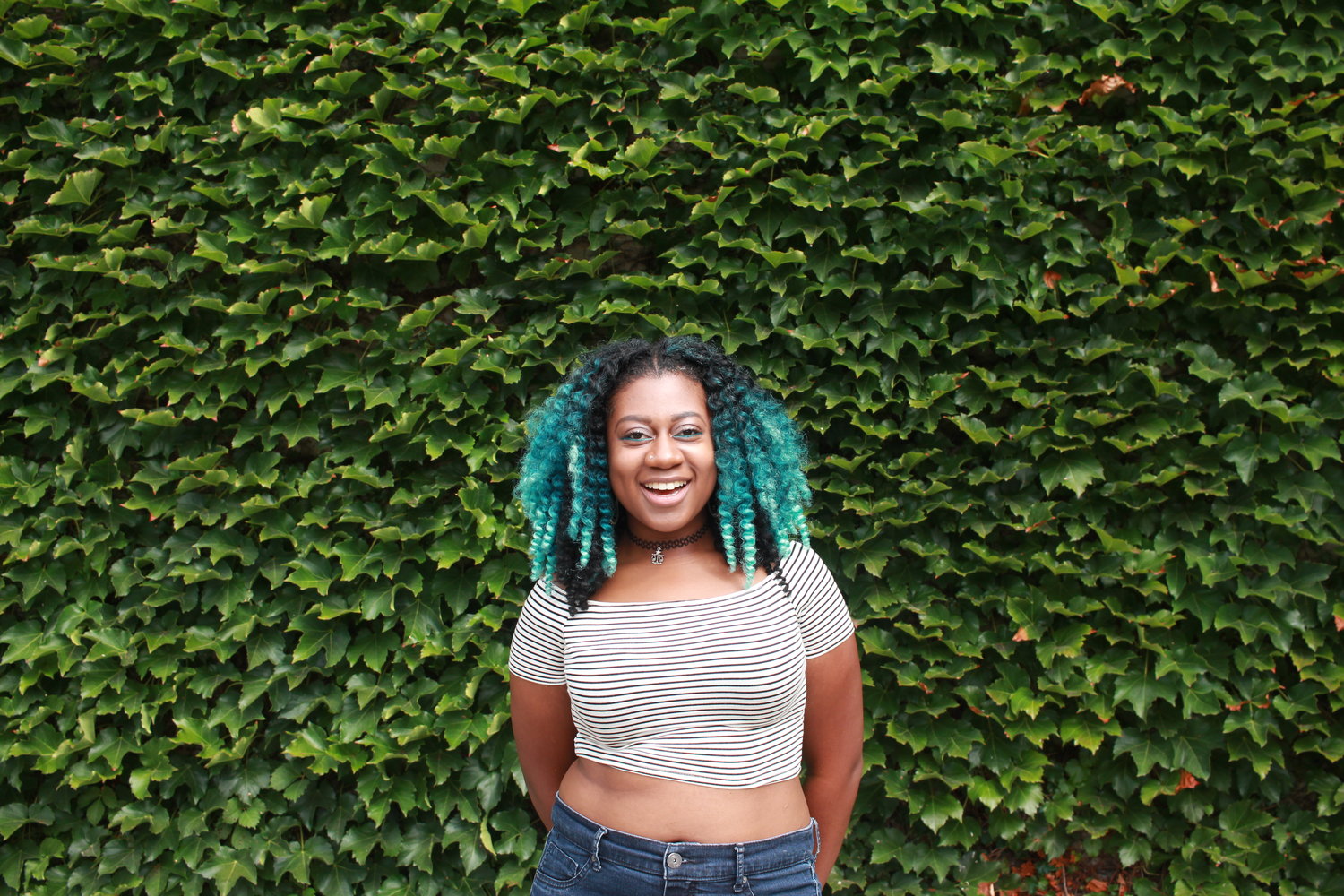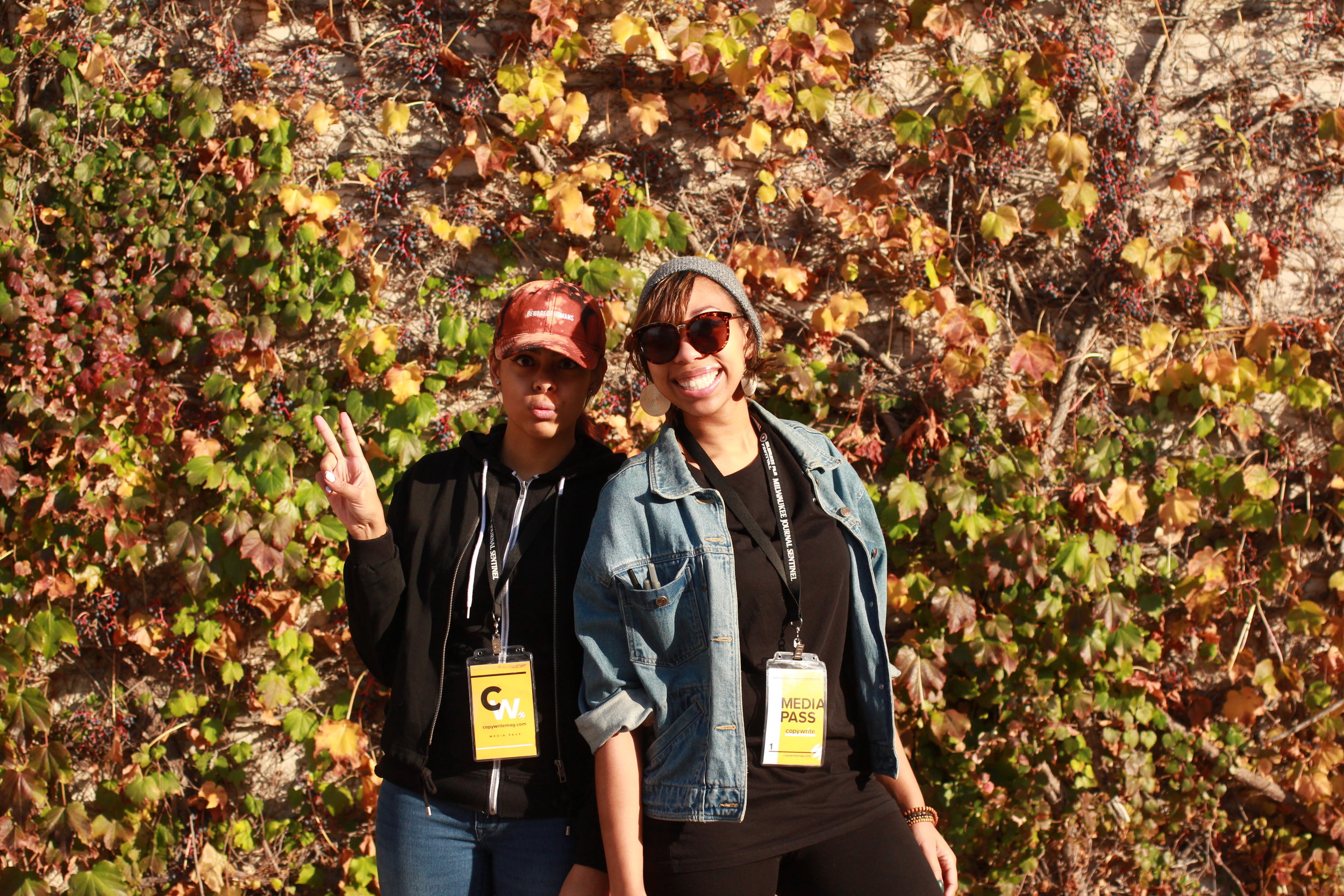Snapshot Press Release: More Than 100 Womxn (Interview w/ Corey Fells)
/Women have been described as mysterious creatures that have been bound to human forms, whose stories transgress most laws of nature, exposing a magic that we call life…
Or that's what you should think!
Even as majestic as we hope the world will see us, there are stories that as women we carry and each nuance that defines us tells a piece of that story.
Corey Fells, a photographer from Milwaukee has released the entirety of his 100 Womxn project to be exhibited at the Museum of Wisconsin Art (205 Veterans Ave. West Bend, WI) showing from October 13th, 2018 to January 13th, 2019. The exhibit showcases 97 images of Black & Brown women (equalling 100 women photographed) in front of a morphing background of foliage that transition throughout several seasons in Milwaukee, like a continuous narrative that celebrates the diversity, majesty, and inspiration these women hold. He sat down with CopyWrite to discuss how his project is more than 100 Womxn, but more like 100 ways to impact our community.
CF: “Its story of individual Black & Brown women. It was about allowing them to express stories about their relevant stance in the community and a stance here in Milwaukee. Some of these stories overlap. Some are completely opposite, and some are exactly the same. This just allows people to understand that. . . As a society, we overlook woman's perspective. That's why I made this about women and only about women. Even within the title, the X is used to symbolize this has nothing to do with men, except for the fact that I (as a man) took the photos.”
Underlying the story of these women lays the story of Corey & the relationship between him and his late mother “Pookie”. Many media outlets have interviewed Corey about this project and have described it as just a simple homage to his mother as photos of women. But what they failed to report is how the process of taking these photos fill a void in his understanding of women, parenting, cultivation, and sense of self that Corey is trying to grasp.
CF: “So a lot of the questions that were prompted by me to the women while I was taking their photos, were questions about their moms, about their parents, siblings, and how they feel in relevance to that.”
His homage to his mother was always covert. It is the process of taking these photos were Corey has received insight into who women can be and has allowed women to speak their truths, in a midwest city that is often overlooked. The nuances of asking gives these women the agency to tell their story, and reveal their true perspectives.
CF: “In the beginning, I took pictures of 10 women I chose because I knew other women admired them. I couldn’t just take pictures of people in my family or something like that because it would seem disingenuous. So I chose women who I didn’t know anything about which made me have to force the conversation between myself and them. I couldn’t just assume anything. I can't say ‘hey this is who you are.’ I had to have this dialogue. I really wanted this to be something for me to learn and kind of get over. Because after my mom passed, I didn’t have that frame of reference and understanding of what a woman was. So these conversations are very genuine. Some of them I didn't even take a photo for the first hour of us standing and talking because it was just a genuine flow of authenticity between two people.”
Strategically, he asked me a question, flipping our interview into a discussion where he turned his photo taking methods into a conversation where my female perspective was just as vital to the narrative as his own thoughts.
CF: “How do you feel about women here in Milwaukee?”
CW (Lexi): “I feel like women here are amazing. I think only as of recently they have been able to express themselves in a way that is unapologetic and that is being accepted. What it means to be a woman here is definitely different, especially for Black & Brown women. I, myself and I think more women are starting to use their platforms to help cultivate our communities. I think it's dope, that we not just women but we are our craft, we are our story.”
He then asked questions about my personal power struggles in my successes as a woman of color, where I shared my arsenal on how to combat with the woes of a patriarchal system, after I clued him in he returned to his point:
CF: “These stories and these type of self-reflections help me. After I looked at this project, I realized that I’m getting older, life is going to happen. I want to have a daughter. There are going to be times when I have to explain to her certain things. I can pull different references from these stories and say, I heard something from these women. . . That may help me deliver that better or understand her better. I don’t want to be narrow-minded.”
As the story of women unfolds, morphs, and shapes our image in the same way the leaves change colors and fall from the vines in the hope that in the next season new ones will bloom in the 100 Womxn project, Corey hopes that this exhibit can be the blossoming of greater things.
CF: “My plan is to hopefully use this project as the concept for a panel discussion that starts here in Milwaukee and then moves over to other universities around the country. Mainly HBCUs.”
Even though the project has made an impact on Corey in positive ways, and has documented Black & Brown women, who have historically not been mused in such a reverent way, as he has chosen to exhibit it digitally and now physically in a museum, he is at the criticism of the viewer, who often have a perspective of their own.
CW: “Now that you are putting your project on public display, what does the outsider think of this work? What has been said?”
CF: “It’s funny that you ask that. I was actually looking through my Twitter, and you know Twitter is a place where people are highly opinionated. . . . [ a snippet of the project was released as a clip on an outside source] so there where people around the world that were just kind of like ‘I guess white women can’t be inspiring.’” (Say Word????) “Yeah! Or ‘This is very eclectic...’ with quotation marks, ‘. . . group of women.’ However, that just made me think about civil rights and reference that to women's rights...which everyone knows that the women's rights movement was more about white women's rights. So it was like ok, let me relate these things. It just makes perfect sense referencing the past. It really didn’t matter [ what they said]. I don't really care to make this a thing that is meant for anyone else. I just want to make sure that when I do create something I send it out to the people that do have the most knowledge about it.”
In other words, speaking as a woman of color writing this. . .White women, this one, this time, is not about you! Please have several seats. Your comments are insulting to the process and the agency that Black & Brown people don't have the right to be inspiring, MAGICAL, and relevant without you! *Flips Hair*
Even in the reference to the process of 100 Womxn, Corey sat down with many of his female friends to ask them their thoughts on the idea he was cultivating to do a project on women. He admits that the women he asked were highly opinionated and turned down many of his ideas because they were subpar, focussing on the nuances of detail that actually matter.
(He actually said they called them stupid. . .but let's just act like they said subpar Lol)
Men have been speaking for women far too long. It is important to know that as a photographer capturing a subject that exists outside his photos Corey has voluntarily admitted that he can not see all and know all from his perspective as a man and has allowed for women to help him develop this project far beyond their aesthetic value but actually for their expertise.
CF: “That was one of my biggest fears. I didn’t want anyone to think I was exploiting women.”
Actually (randomly) being one of the women captured in this project, I can firmly say that I don't feel exploited because of the agency I was allowed as a participant, and how he has used my photo and my story as a part of a narrative that is bigger than myself; a part of cultivating culture.
“Culture is a huge thing that I want to push out, really dive into, and allow people to express.”
After this exhibit, Corey is slated to do a project with the Milwaukee Art Museum, involving the youth of MKE. He is eager to make an impact by way of photography, noting that this is beyond him, and he trying to do his part by using his own skills and talents.
CF: “There is a gap between the older generations and the youth, and how they help them. Many of my peers are doing their things, and I’m just trying to find my way of doing that. . .It helps build up what the culture of photography is really all about.”
Next year he will be leaving to go to San Diego for military duty. His contribution to the creative scene and youth development by way of photography is what he hopes to leave as his legacy and contribution to Milwaukee.
CF: “My godfather always told me, before you leave anywhere you always make it better then you had it. I don't want to leave here and that's just what it is. I don't want photography to stop. I don't want momentum to stop. I don't want photographers to think you just upload to Instagram and it ends. Make it tangible. Allow people to see it and be integrated within the community.”
That's the true art.
Make sure you go check out the 100 Womxn exhibit at the Museum of Wisconsin Art this fall & reflect on what these women actually mean. We are more than what meets the eye.
Lexi for /CW










